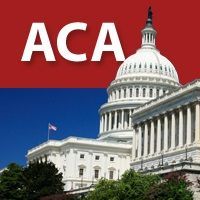- Revenue Cycle Management
- COVID-19
- Reimbursement
- Diabetes Awareness Month
- Risk Management
- Patient Retention
- Staffing
- Medical Economics® 100th Anniversary
- Coding and documentation
- Business of Endocrinology
- Telehealth
- Physicians Financial News
- Cybersecurity
- Cardiovascular Clinical Consult
- Locum Tenens, brought to you by LocumLife®
- Weight Management
- Business of Women's Health
- Practice Efficiency
- Finance and Wealth
- EHRs
- Remote Patient Monitoring
- Sponsored Webinars
- Medical Technology
- Billing and collections
- Acute Pain Management
- Exclusive Content
- Value-based Care
- Business of Pediatrics
- Concierge Medicine 2.0 by Castle Connolly Private Health Partners
- Practice Growth
- Concierge Medicine
- Business of Cardiology
- Implementing the Topcon Ocular Telehealth Platform
- Malpractice
- Influenza
- Sexual Health
- Chronic Conditions
- Technology
- Legal and Policy
- Money
- Opinion
- Vaccines
- Practice Management
- Patient Relations
- Careers
Obamacare Driving More, Not Fewer, Patients to Community Health Clinics
Many expected the insurance exchanges established under the Affordable Care Act would reduce the number of uninsured patients community health clinics see. The opposite happened.

Nurse practitioner Martha Brinsko helps a lot of patients manage their diabetes at the Charlotte Community Health Clinic in North Carolina.
“Most mornings when you check your sugar, what would you say kind of the average is?” Brinsko asked patient Diana Coble.
Coble hesitated before explaining she ran out of the supplies she needs to check her blood sugar levels, and she didn’t have the gas money to get back to the clinic sooner. Brinsko helped Coble stock up again.
“If you need to get more than one box, get more than one box,” Brinsko said. “But you need to check them every morning so that we can adjust things.”
Coble, who is unemployed, lives with her sister and can’t afford insurance even now that the health law is in place, relies on the clinic for health care.
“They do a great job with everything,” Coble said. “I couldn’t do without them.”
Nancy Hudson was the clinic’s director as Obamacare rolled out and now consults for the clinic. She expected the insurance exchange, or marketplace, established under the Affordable Care Act would reduce the number of uninsured patients the clinic sees. The opposite happened, she says.
“What we found within our patient population and within the community is that a lot of the advertisement and information about the marketplace brought people [in who] didn’t know anything about free clinics and did not qualify for any of the programs within the ACA marketplace,” Hudson says.
And now they get free or low-cost care at the clinic, which is designated by the government at an FQHC, or federally qualified health center.
The health law was designed to cover the poorest people by expanding Medicaid, the federal-state program for low-income people. But the Supreme Court made that optional. The result in states that didn’t expand Medicaid is a gap, where some people make too much money to qualify for Medicaid but not enough to qualify for insurance subsidies. In North Carolina, about 319,000 people, like Coble, fall into the Medicaid gap.
“Over half of the people that we see would’ve been eligible for Medicaid expansion had the state elected to exercise that option,” says Ben Money is president of the association that represents North Carolina’s community health centers.
North Carolina is among the 21 states, including many in the South, that are currently saying no to Medicaid expansion. Louisiana is another.
Dr. Gary Wiltz, the CEO of 10 community health centers in the southwestern part of Louisiana, says demand has surged. “We’ve gone from 10,000 patients to 20,000 in the last 6 or 7 years, so we’ve doubled,” he says.
Wiltz says other things are at play, too. The economic recovery hasn’t reached many of the poorest people, and some who do qualify for Obamacare subsidies say their options are still too expensive.
“The need keeps increasing, and I think that’s reflected throughout all the states,” he says.
Wiltz, who also heads the board of directors for the National Association of Community Health Centers, says clinics are packed even in states that expanded Medicaid. After all, most of the clinics treat Medicaid patients too.
The Charlotte clinic’s Nancy Hudson says there’s another part of the health law helping fuel the growth: additional funding for community health centers.
Hudson found out last week her clinic is getting about $700,000 to expand in partnership with Goodwill.
“Many of their clients did not have any access to health care,” she says. “They can’t train and sustain a job if they don’t have the basic needs taken care of, and health care is one of them.”
Nationwide, the federal government estimates its latest round of funding will lead to about 650,000 people getting better access to health care.
This story is part of a reporting partnership with NPR, WFAE and Kaiser Health News. This story was originally published by Kaiser Health News (KHN), a nonprofit national health policy news service.
